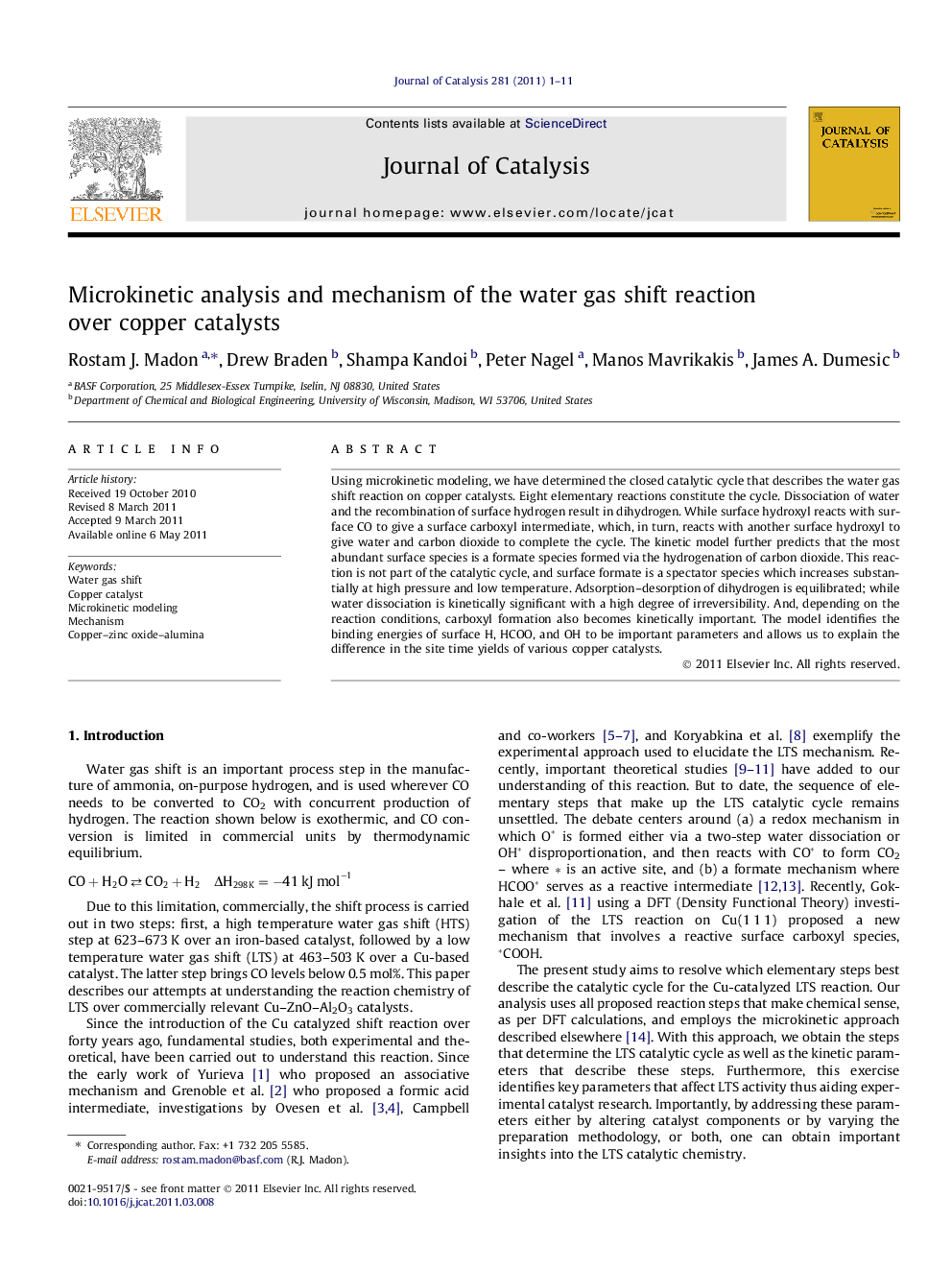| کد مقاله | کد نشریه | سال انتشار | مقاله انگلیسی | نسخه تمام متن |
|---|---|---|---|---|
| 61649 | 47597 | 2011 | 11 صفحه PDF | دانلود رایگان |

Using microkinetic modeling, we have determined the closed catalytic cycle that describes the water gas shift reaction on copper catalysts. Eight elementary reactions constitute the cycle. Dissociation of water and the recombination of surface hydrogen result in dihydrogen. While surface hydroxyl reacts with surface CO to give a surface carboxyl intermediate, which, in turn, reacts with another surface hydroxyl to give water and carbon dioxide to complete the cycle. The kinetic model further predicts that the most abundant surface species is a formate species formed via the hydrogenation of carbon dioxide. This reaction is not part of the catalytic cycle, and surface formate is a spectator species which increases substantially at high pressure and low temperature. Adsorption–desorption of dihydrogen is equilibrated; while water dissociation is kinetically significant with a high degree of irreversibility. And, depending on the reaction conditions, carboxyl formation also becomes kinetically important. The model identifies the binding energies of surface H, HCOO, and OH to be important parameters and allows us to explain the difference in the site time yields of various copper catalysts.
Using microkinetic modeling, we have determined the eight elementary reactions that constitute the closed catalytic cycle for the water gas shift reaction on copper catalysts. Interestingly, the most abundant surface species is bidentate formate formed via the hydrogenation of carbon dioxide which is not part of the catalytic cycle.Figure optionsDownload high-quality image (93 K)Download as PowerPoint slideHighlights
► Eight elementary reactions describe the water gas shift mechanism over Cu.
► Steam dissociation is a kinetically significant step.
► Formation and reaction of a carboxyl intermediate are also important steps.
► Surface formate is present, but it does not participate in the catalytic cycle.
► Binding energies of H, HCOO, and OH are important parameters.
Journal: Journal of Catalysis - Volume 281, Issue 1, 1 July 2011, Pages 1–11